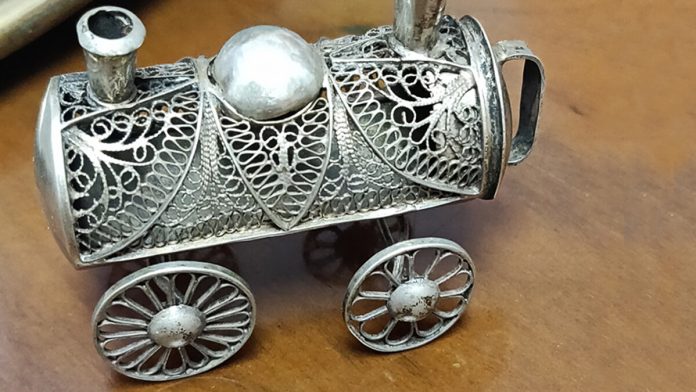Steffie Buechler came to England in 1939 from Glauwitz, Germany (now Poland) to work as a domestic servant, having taken a one-month needlework course ‘for female emigrant Jews’.
With a testimonial from the Paula Ollendorff Housekeeping School for Jewish women, she was able to get a life-saving domestic workers visa to go to Ealing and work in the house of a Jewish doctor, Dr Rachwalski. She was later followed by her brothers Henry and Alfred, who arrived in the Kindertransport. They never saw their parents, Jacques and Kate, again.
Alfie (Alfred), now 95, became a kosher caterer in Ilford, working from home to cater for large weddings and other celebrations. He visits South Africa for Pesach each year and gave a talk on the Kindertransport at the Holocaust Centre in 2019.
Steffie married Albert Newall in England in 1944. Albert was a talented artist, sculptor and photographer who moved to South Africa in 1946. Steffie passed away in 1972, aged 52. Albert passed away in 1989, aged 69.
Their son Andrew, who was born in Krugersdorp, was prompted by the recent tragic loss of his life partner of 19 years to donate some Judaica items to the Jewish Museum and the Cape Board’s collection. This gesture is also in honour of his late mother and her brother, Alfie.
The objects include a beautiful and rare silver filigree bessamim box shaped like a train engine and a most unusual pendulum clock shaped like a Magen David with Damascene inlay. There is also a fine brass, copper and gold inlaid Damascus ware tray with Hebrew inscriptions and a depiction of Moses in the bulrushes, a small brass Chanukiah, and an interesting leather handbag that has been engraved.
The handbag tells an unfinished story. It has the intertwined gold initials ‘J’ and ‘B’ on it, and a silver plaque in Hebrew and German. The current translation of its message is, “On the other hand, to my dear friend Jetty from your friend Benno. First day Sukkot, 23 September 1926, Libau.”
Libau was a popular port of embarkation for ships from the Deutsche Ost-Afrika Linie or ‘DOAL’ — the German East Africa Line — travelling to South Africa. Therefore, presumably, it was Benno’s farewell gift to her. Inside the bag, there is a page from a bone notepad with the name ‘Watussi’ scribbled on it. The Watussi was a DOAL ship that was scuttled off Cape Point in 1939. So, presumably, Jetty left on the Watussi.
A second plaque on the bag, in Yiddish, reads, ‘Yeta Fas, from Matty, 30 September 1926’. Why did Matty add their name to Benno’s farewell gift a week later? And did Benno ever see Yeta (Jetty) Fas again?
The Jewish community is very grateful to people like Andrew Newall who appreciate and value the past, who want to ensure that heritage items of historical significance are retained and cherished and who decide to honour their family by donating such items to the community in their names.
The Cape Board welcomes any further information that pertains to these items or individuals.
Visit the Cape SA Jewish Board of Deputies website, www.capesajbd.org for information and news.
Visit the SA Jewish Museum website, www.sajewishmuseum.co.za for information and news.

Gwynne Robins thanks Andrew Newall for his generous and thoughtful Judaica donation 
A small brass Chanukiah 
a fine brass, copper and gold inlaid Damascus ware tray with Hebrew inscriptions and a depiction of Moses in the bulrushes 
A rare silver filigree bessamim box 
The mysteriously inscribed handbag of Jetty (Yeta) Fas
To read or download the full March issue PDF of the Chronicle, click here
To read the Editor’s column for March, click here
To read the most read article of the February issue, click here
Portal to the Jewish Community: to see a list of all the Jewish organisations in Cape Town with links to their websites, click here











